- News
- Reviews
- Bikes
- Accessories
- Accessories - misc
- Computer mounts
- Bags
- Bar ends
- Bike bags & cases
- Bottle cages
- Bottles
- Cameras
- Car racks
- Child seats
- Computers
- Glasses
- GPS units
- Helmets
- Lights - front
- Lights - rear
- Lights - sets
- Locks
- Mirrors
- Mudguards
- Racks
- Pumps & CO2 inflators
- Puncture kits
- Reflectives
- Smart watches
- Stands and racks
- Trailers
- Clothing
- Components
- Bar tape & grips
- Bottom brackets
- Brake & gear cables
- Brake & STI levers
- Brake pads & spares
- Brakes
- Cassettes & freewheels
- Chains
- Chainsets & chainrings
- Derailleurs - front
- Derailleurs - rear
- Forks
- Gear levers & shifters
- Groupsets
- Handlebars & extensions
- Headsets
- Hubs
- Inner tubes
- Pedals
- Quick releases & skewers
- Saddles
- Seatposts
- Stems
- Wheels
- Tyres
- Health, fitness and nutrition
- Tools and workshop
- Miscellaneous
- Buyers Guides
- Features
- Forum
- Recommends
- Podcast
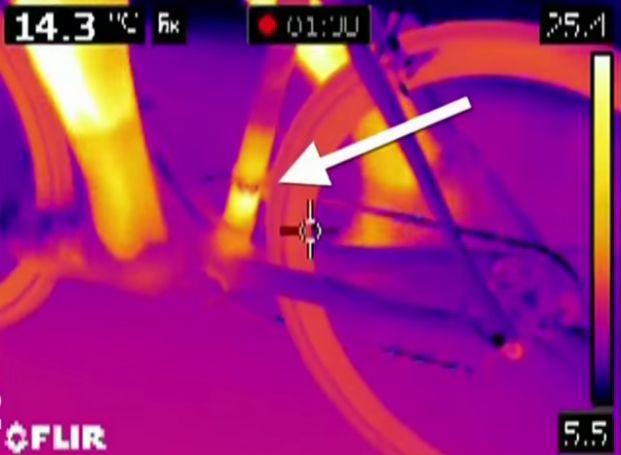 Motor hidden in bike frame (Stade 2 video image, April 2016).JPG
Motor hidden in bike frame (Stade 2 video image, April 2016).JPGUCI warns cheaters “it is impossible to slip through the net” as new inspection tool set to be used at Tour de France to combat motor doping
The UCI has warned any rider attempting to race with a hidden motor in their bike during the Tour de France that it is “impossible to slip through the net”, as cycling’s governing body announced that a new unspecified inspection tool will be used during the race to combat any potential technological fraud in the peloton.
Alongside the ongoing fight against motor doping, the International Testing Agency (ITA), which has been responsible for cycling’s anti-doping efforts since 2021, has also confirmed that 600 blood and urine samples will be collected from riders during the Tour, with 400 tests carried out in the month leading up to the race, in what the ITA calls “one of the most comprehensive anti-doping programmes to date”.
In a statement released this morning, the UCI has said that, before each of the 21 stages of the Tour, which gets underway this Saturday in Florence, checks will be carried out using a magnetic tablet on every bike being used at the start of that day’s stage, in a bid to detect any hint of a concealed motor.
(Zac Williams/SWpix.com)
After each stage, meanwhile, bikes belonging to that day’s winners, riders wearing the Tour’s classification jerseys, several “randomly selected” riders, and any rider “who gives rise to suspicion” either before or during the stage, will be tagged immediately and checked using portable non-intrusive X-ray inspection technology. If necessary, the commissaires will then be permitted to dismantle the bike.
The UCI has confirmed that other methods, along with the magnetic tablets and more accurate x-ray machines, will be used to search for mechanical fraud, including devices that use backscatter and transmission technologies as well as image processing.
The governing body also announced that a new, unspecified “non-intrusive inspection tool” will be used for the first time during the 2024 Tour, “as part of the improvement of its detection programme using the latest technology”. More details on what this new technology entails will not be released until after the Tour de France.
> UCI warns it is "impossible" to get away with hidden motors, all 997 Tour de France tests negative
The UCI’s renewed commitment to combating technological fraud comes after concerns were raised last year about cycling’s approach to motor doping – despite 997 tests being carried out at last year’s Tour.
While Belgian cyclocross rider Femke Van den Driessche remains the only elite level professional to have been banned for mechanical doping, after a concealed motor was found in her bike at the 2016 world championships in Zolder, accusations and rumours concerning the use of hidden motors at the highest levels of the sport emerged once again last autumn.
In September, in the wake of Jumbo-Visma’s 1-2-3 atop the Col du Tourmalet at the Vuelta a España, former Quick-Step pro Jérôme Pineau accused the Dutch team, without providing any evidence, of mechanical doping, while claiming that the UCI “don’t control anything anymore and do what the big teams want”.
However, following the 2023 Tour de France, the governing body released a statement warning the peloton that it is “impossible” to dope mechanically without getting caught, thanks to the extensive testing carried out at cycling’s biggest races.
Of the 997 tests carried out at the Tour, the UCI revealed, an average of 48 per stage, all came back negative. 837, or an average of 40 per stage, were undertaken at the beginning of the day before racing was underway, using a tablet fitted with a dongle to detect magnetic fields.
Meanwhile 160, or an average of eight per stage, were undertaken at the conclusion of the stage using the more accurate backscatter or transmission x-ray tests.
While those figures may appear impressive on paper, an investigation carried out by the RadioCycling podcast last September exposed a more worrying trend behind the negative tests.
Despite the high number of tests carried out at the Tour and championed by the UCI, the podcast revealed that the x-ray machine was not deployed, and was in fact taken home, for the race’s final weekend, while no tests at all were carried out on the final stage into Paris.
At the 2023 Giro d’Italia, meanwhile, no tests were carried out on four of the grand tour’s 21 stages, including the stage one and stage 10 time trials. While 158 bikes were tested before stage 20 – the decisive mountain time trial to Monte Lussari – almost all of the riders taking part changed their bike before the steep final climb, with no tests carried out on those climbing bikes after the stage.
> A brief history of motor doping in cycling, from the pro peloton to amateur hill climbs
X-ray machines were also not used once at the Italian grand tour, and were only used for the last six stages of the Vuelta a España, with commissaires forced to rely on the less accurate tablet (or iPad) method for tests, which tend to lack accuracy due to not being able to see through carbon frames, despite accounting for 88 per cent of all tests carried out throughout 2023.
At the Tour de France Femmes, x-rays were not used once throughout the race, while just six bikes were tested before the final day time trial. No tests were also carried out on the Vuelta Femenina’s queen stage to the iconic Lagos de Covadonga.
No motor doping tests, meanwhile, were carried out at all during the Volta a Catalunya, one of the sport’s biggest week-long stage races, between 2021 and 2023 (despite the UCI’s rules mandating that all WorldTour events provide mechanical doping tests), while just four bikes were tested at Milan-Sanremo, Flèche Wallonne Femmes, and Paris-Roubaix Femmes in 2023.
Nevertheless, the UCI remains confident that its plan to combat any form of mechanical doping at this year’s Tour is full proof.
“The plan put in place by the UCI to fight against technological fraud at the 2024 Tour de France sends out a very clear message to anyone who might be thinking of cheating: it is impossible to slip through the net,” the UCI’s director general Amina Lanaya said in a statement today.
“With the combination of checks on all the bikes used at the start of each stage and checks on numerous bikes at the finish, based on criteria linked to performance on the one hand and any form of suspicion on the other, and all using the most modern detection tools, we can guarantee the fairness of cycling competition and protect the integrity of the sport.”
“We are implementing one of the most comprehensive anti-doping programmes to date”
Alongside the governing body’s mechanical fraud plans, the 2024 Tour de France will also witness “one of the most comprehensive anti-doping programmes to date”, according to the body tasked with testing the sport’s biggest riders.
After a few relatively scandal-free years, the spectre of doping has risen its head once again in recent weeks, after Tour de France stage winner and grand tour podium finisher Miguel Ángel López was handed a four-year suspension by the UCI, for possessing and using the human growth hormone menotropin during the 2022 Giro d’Italia.
And last week, 23-year-old Italian pro Andrea Piccolo was sacked by EF Education-EasyPost after he was caught trying to bring human growth hormone into Italy, after already admitting to taking a sleeping aid without his team’s permission in March.
(Zac Williams/SWpix.com)
And now the International Testing Agency (ITA), which undertakes the sport’s anti-doping protocols on behalf of the UCI, says its plan for the Tour will be implementing an “innovative and intelligence-led testing plan” that will take into account each riders’ Biological Passport data, which now includes the endocrine module that can indicate the use of human growth hormone.
The ITA says that 600 anti-doping will be carried out at any time over the Tour’s three weeks, while 400 out-of-competition samples have been collected in the month leading up to the race.
At the end of the Tour, the ITA will take a selection of samples that will be kept for potential re-analysis over the next 10 years, and says it will keep monitoring rider closely after the race based on data and information it has gathered.
“At the ITA, our commitment to protecting the integrity of sport is unwavering. For the 2024 Tour de France, we are implementing one of the most comprehensive anti-doping programmes to date,” the agency’s director general Benjamin Cohen said.
“By taking advantage of advanced technologies, such as the endocrine module of the Athlete Biological Passport, and working closely with the French and Italian authorities, we aim to ensure a level playing field.
“Thanks to the increased resources provided by cycling stakeholders, we have strengthened our testing, intelligence and scientific capacities. Our rigorous, intelligence-led approach will not only preserve the spirit of fair play during the Tour de France, but will also deter riders from doping in the future, thanks notably to the storage and re-analysis of samples.
“This is a crucial step in our ongoing mission to foster a clean and fair competition environment for all riders.”
After obtaining a PhD, lecturing, and hosting a history podcast at Queen’s University Belfast, Ryan joined road.cc in December 2021 and since then has kept the site’s readers and listeners informed and enthralled (well at least occasionally) on news, the live blog, and the road.cc Podcast. After boarding a wrong bus at the world championships and ruining a good pair of jeans at the cyclocross, he now serves as road.cc’s senior news writer. Before his foray into cycling journalism, he wallowed in the equally pitiless world of academia, where he wrote a book about Victorian politics and droned on about cycling and bikes to classes of bored students (while taking every chance he could get to talk about cycling in print or on the radio). He can be found riding his bike very slowly around the narrow, scenic country lanes of Co. Down.
Latest Comments
- Cugel 1 sec ago
Apparently the building of dedicated cycling paths will solve everything. The aggressive and immature motorists will go looking for victims in...
- Cugel 7 min 10 sec ago
The point is that there's no need to create more "infrastructure" dedicated to cyclists if the worst and dangerous offenders on the road are...
- stonojnr 23 min 44 sec ago
True, fwiw they're half decent round my neck of the woods, but I appreciate having travelled around the UK via train, it ain't always so good...
- PRSboy 25 min 19 sec ago
"Mitigating on behalf of the defendant, and addressing her failure to stop, Foster’s barrister said: “This is a young woman who was in shock by the...
- Legin 1 hour 11 min ago
The tory party will oppose anything that might restrict their tanks rolling at the next election.
- EraserBike 1 hour 17 min ago
I'm sure this (and other 3D printed models) are made where labour costs are cheap also. Nobody is making these in Europe. There's only so much ...
- mdavidford 1 hour 42 min ago
Especially since the similarly priced Tickr X did have that functionality.
- anke2 2 hours 22 min ago
CX is brutal in terms of forces acting on the chain. A single, technical kick at 40 RPM by Iserbyt with a small chainwheel might put more load on...
- mctrials23 3 hours 13 min ago
Not enough to warrant having the role exist at all would be my guess.
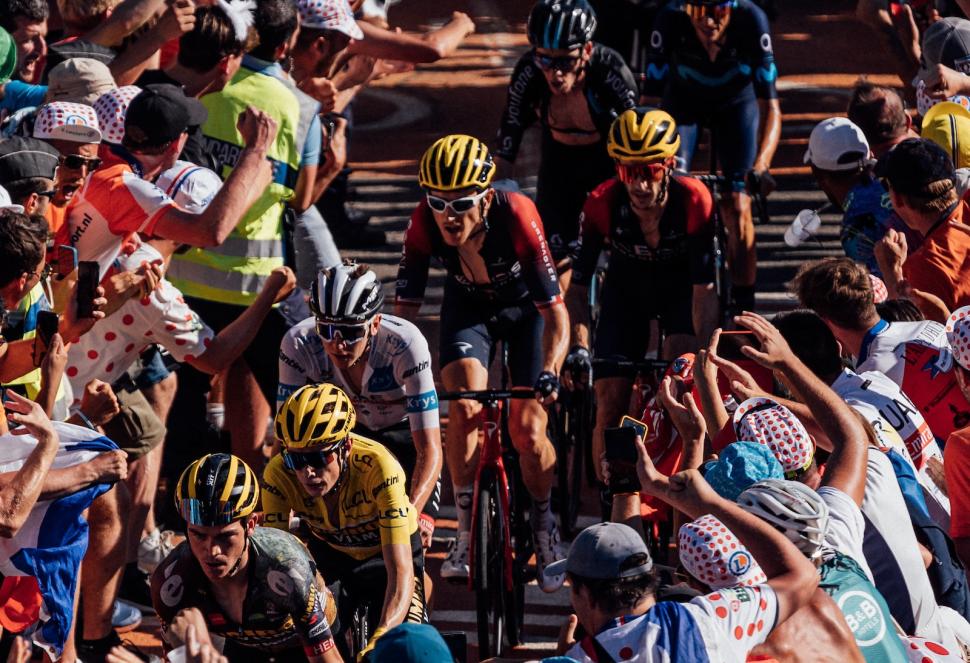
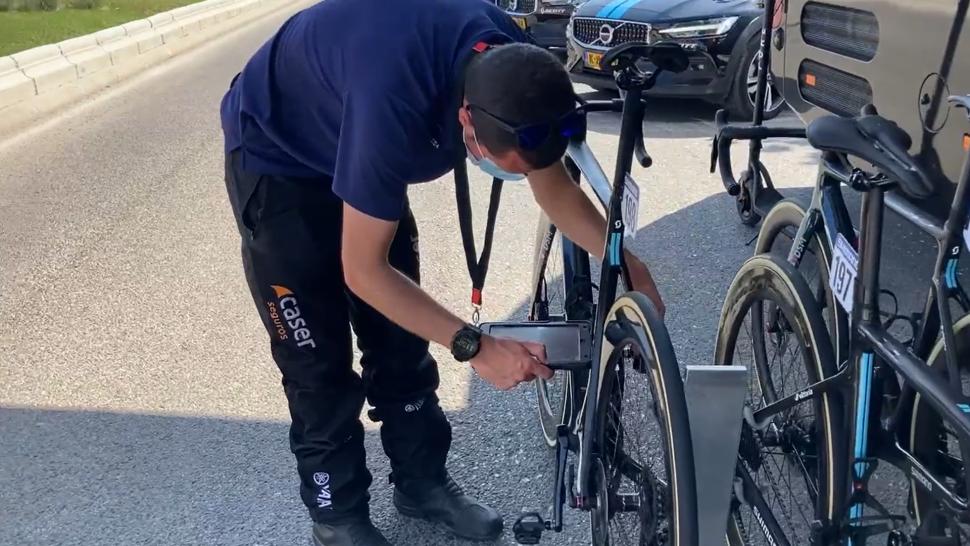
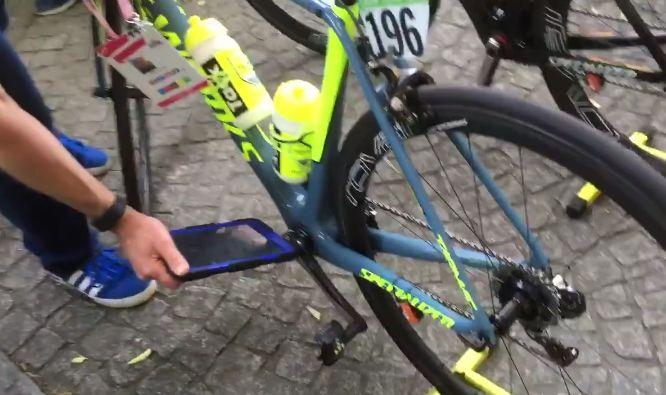
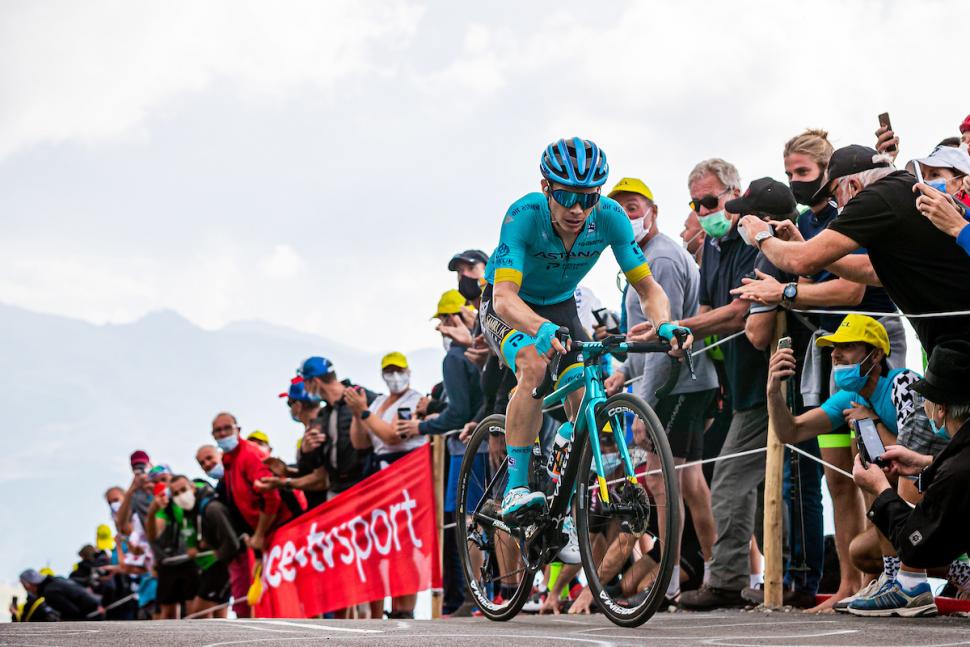
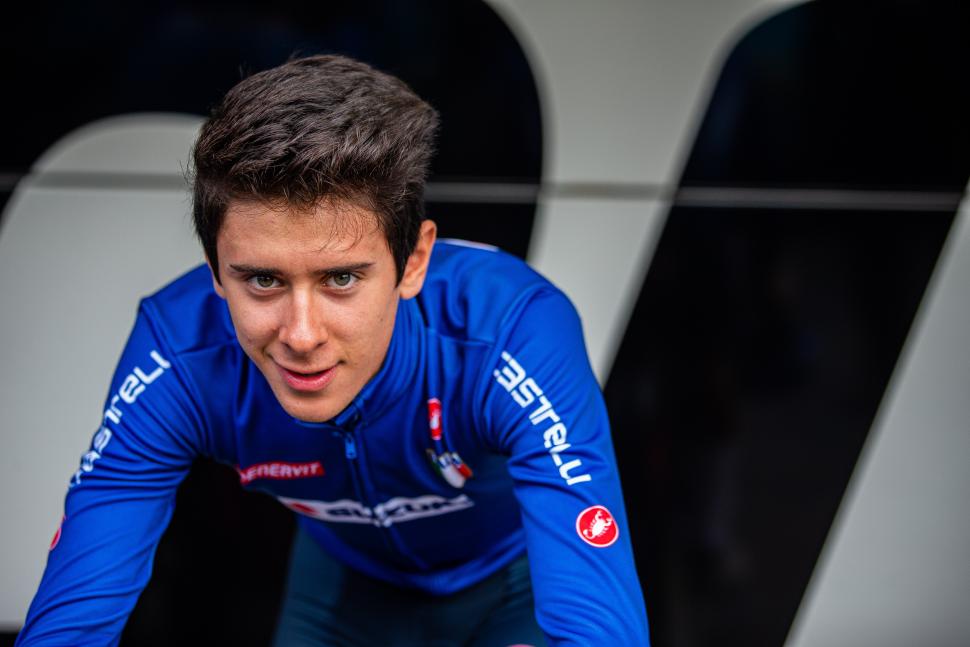
Add new comment
5 comments
Considering that anti doping is hugely underfunded to the point where they can't keep up with new drugs and methods of doping it is probably not too much of a risk if using a unique drug.
This is clearly about deterrence, not detection.
I get the concerns about then possibly, and cycling has repeatedly proven that "if they can, they will" but of all they ways a professional cyclist could be cheating, motor doping in the pro peleton just doesn't feel like it.
Aside from anything else, it would be "crawl into a hole and never come out" embarrassing for anybody caught. You'd never be able to turn up to a training ride again.
They're going to get the mechanics blind drunk and then ask them if they're cheating?
600 biological tests sounds like a lot... until you remember that there are over 150 riders and 21 days of racing. On any given day, a rider has about a 15% chance of being tested, and after they are tested, they can likely assume they are safe for almost a week.
Hormones are almost impossible to detect since they are naturally present in the blood, unless someone is caught with the product in a bottle, like Piccolo and Lopez. Their levels vary a lot, and racers often have much lower levels, so there is a huge margin to take some and still be in the range...
Also many bikes are replaced during the races, making it hard to check everything.